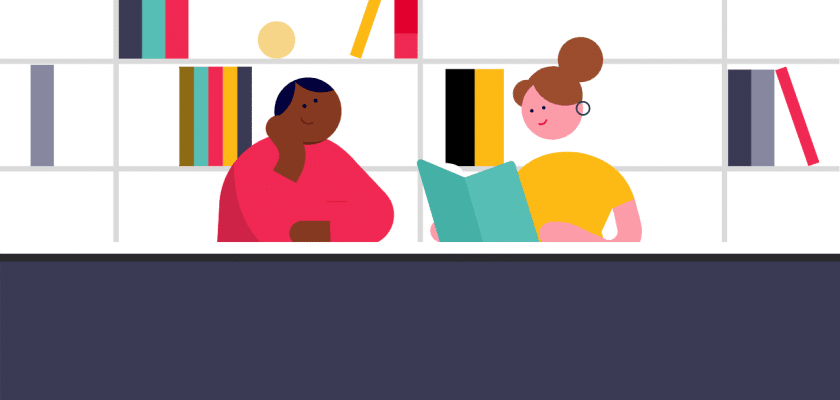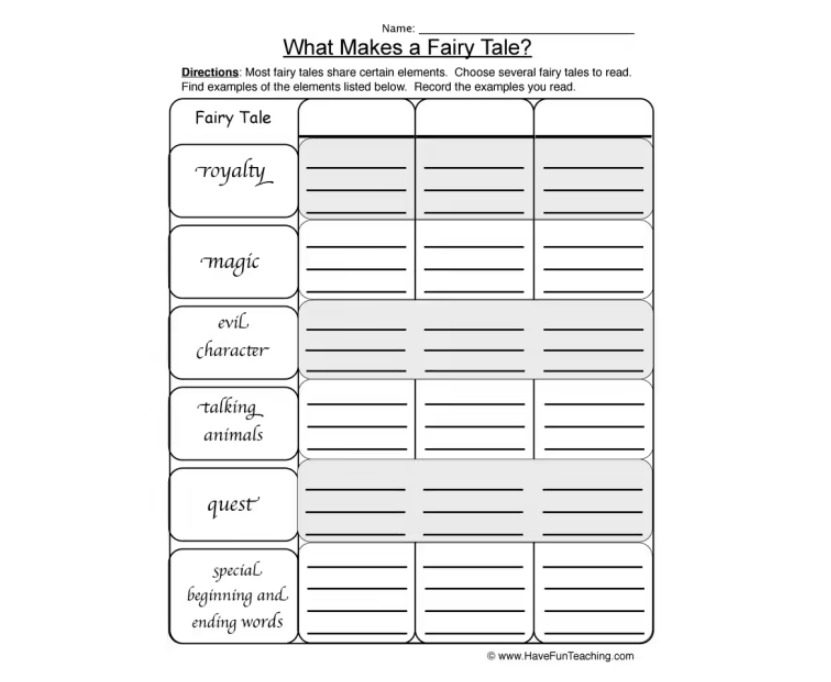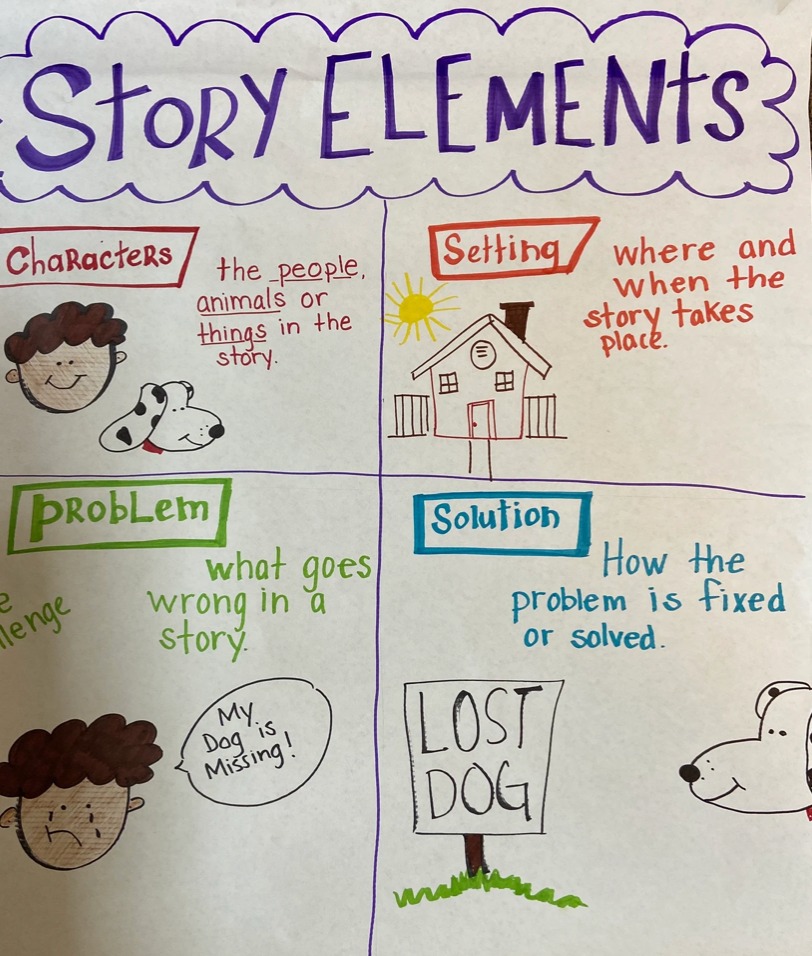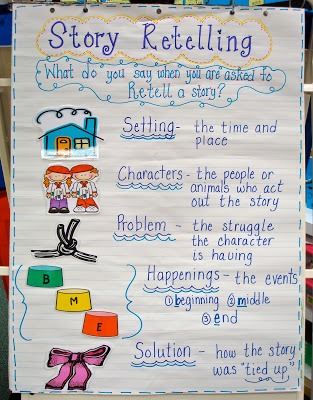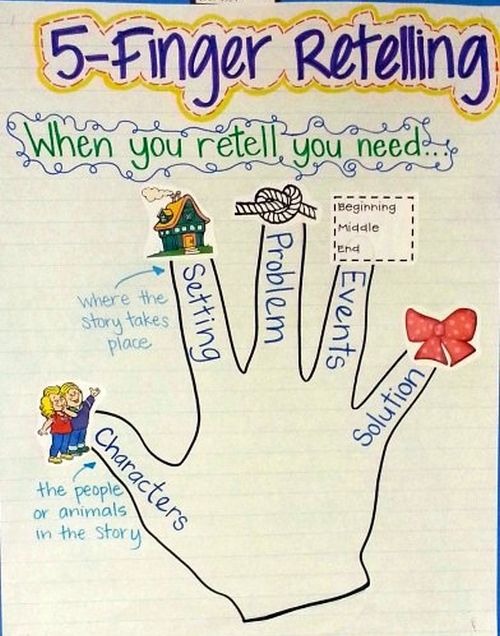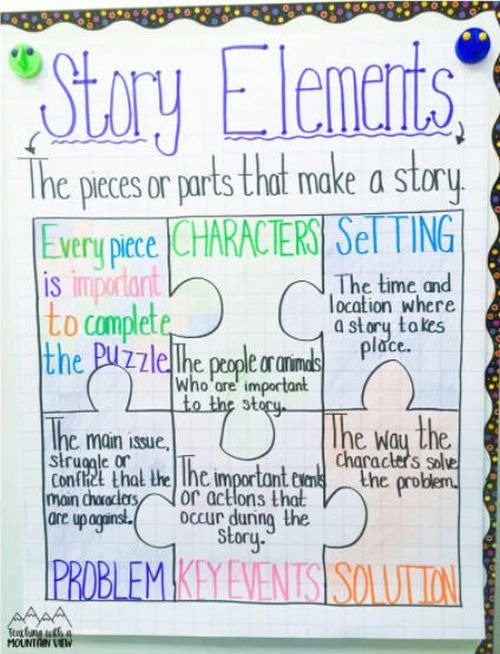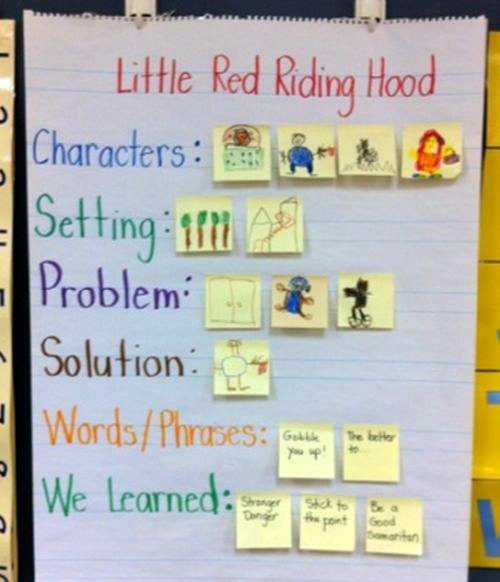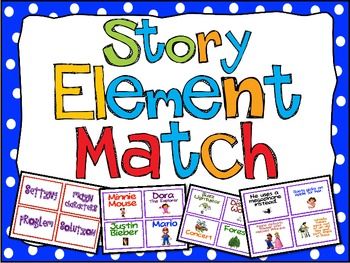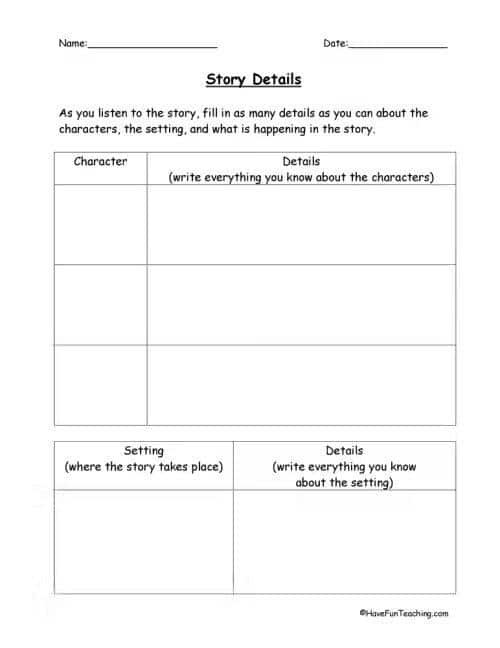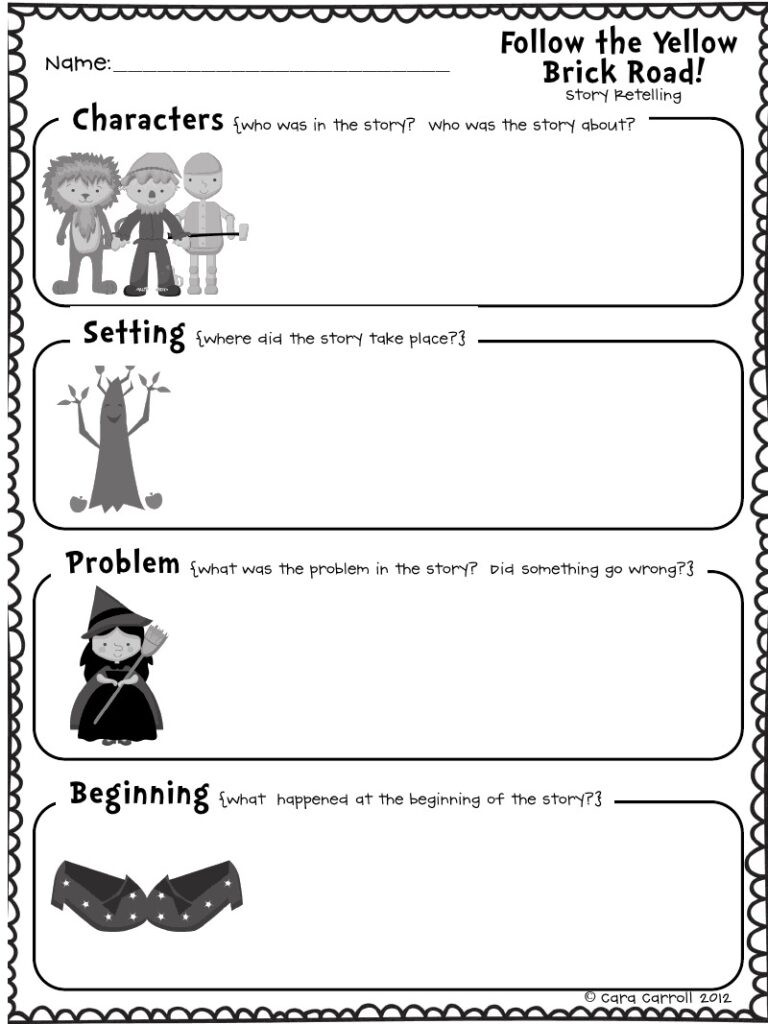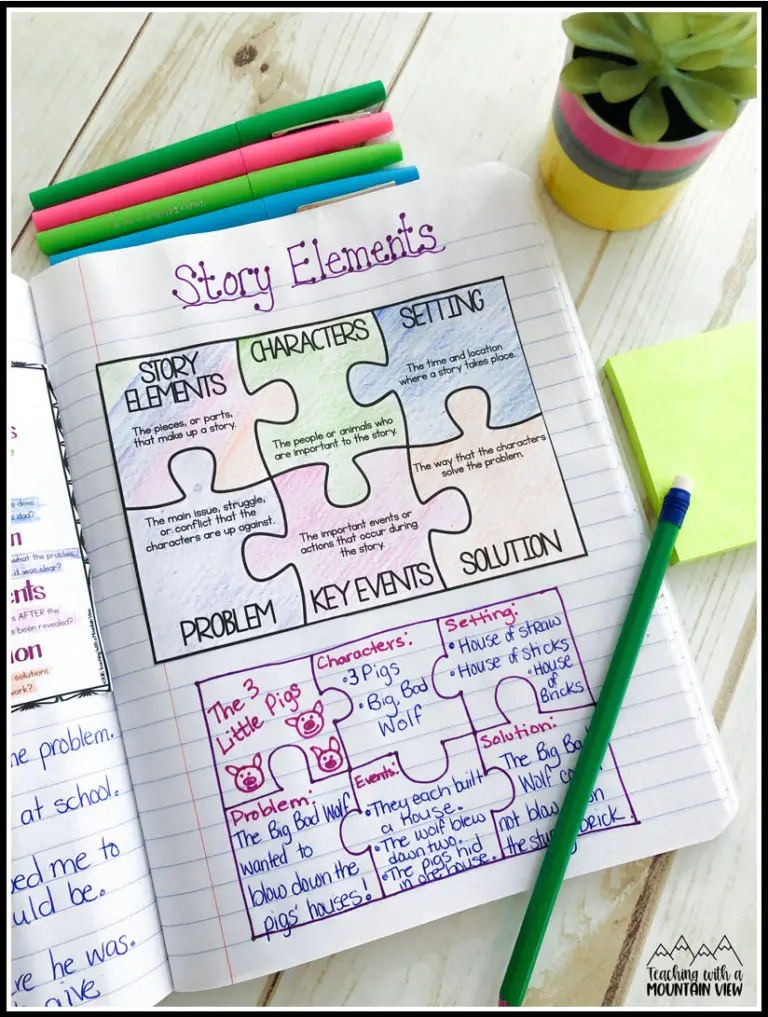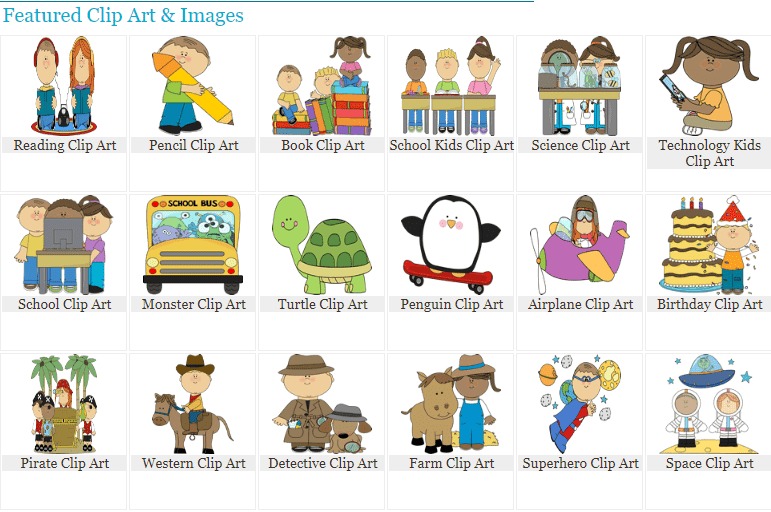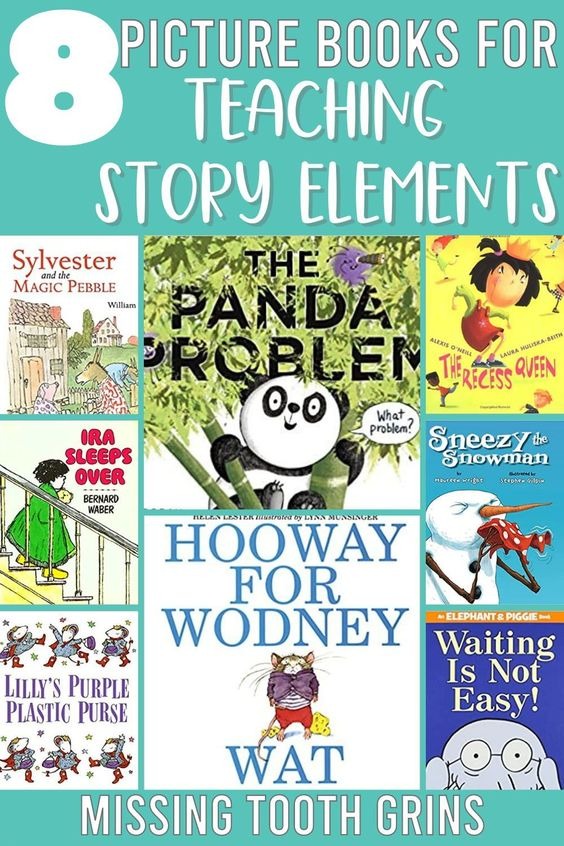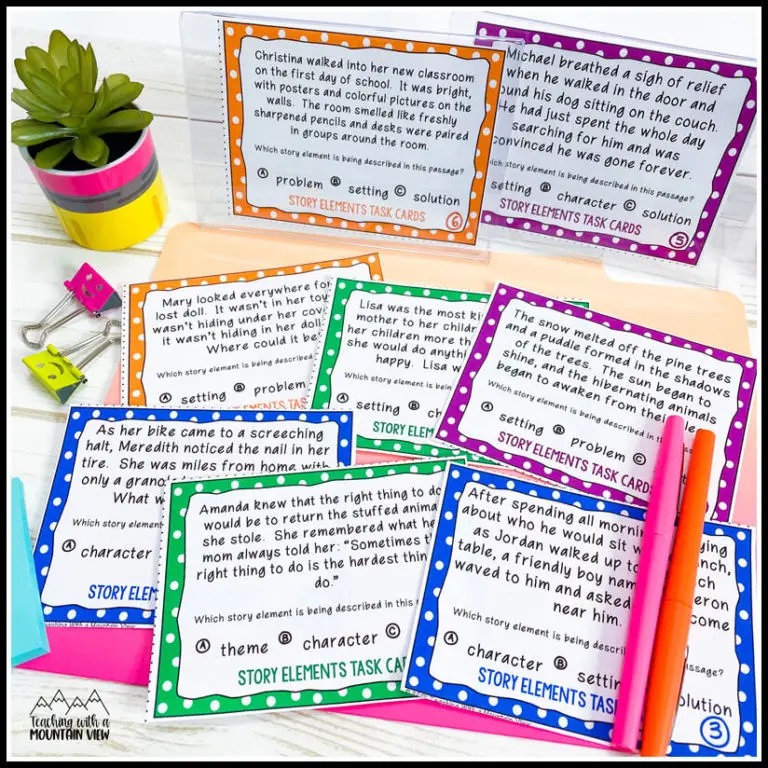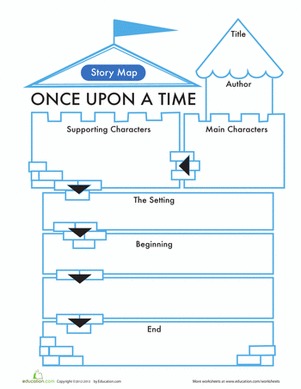How can you get students to differentiate the parts of a story with ease and help them remember the different elements every time they approach a new reading assignment? It’s easy when you have an anchor chart that will serve as a reminder and give them visual aid to better understand the concept.
We’ll show you how to design a story elements anchor chart and where to find the best ones online.
Why To Use a Story Elements Anchor Chart
Fairy Tales Elements Worksheet By Have Fun Teaching
A story elements anchor chart helps students recognize different parts of a story. They can use story structure anchor charts as a visual guide during storytelling (and retelling). The more they use it, the easier it will be for them to determine the story structure.
When it comes to reading comprehension, especially with younger students, the best idea would be to combine a plot elements anchor chart with other story-related charts. For example, you can use charts dedicated to character traits, main ideas, themes, and figurative language.
Elements of a Good Story Elements Anchor Chart
So what should you have on a story element anchor chart?
An exciting plot
A plot is the sequence of events that make up a story. A plot has a beginning, middle, and end, a cast of characters, and a setting. It is like a map for your story and shows readers where it is going and what will happen along the way.
A problem and a solution
A story doesn’t necessarily have to be about solving a crime or stopping an enemy from taking over the world. It could be as simple as a boy trying to convince his parents to get him a puppy or a group of misfits uniting against a common enemy. A problem can be just about anything. It can be a misunderstanding between two characters, a decision that needs to be made, or a situation that needs to be resolved. However, it also needs to be solvable. If a problem can’t be solved, it isn’t a real problem and won’t make a good story.
Well-developed characters
Characters are the driving force behind any good story. They are the ones who shape the plot and push the story forward. In addition, characters are the readers’ way of experiencing a story: they are the “eyes” through which the plot’s events are filtered.
A clearly defined setting
The setting of a story isn’t just about the location. It’s also about the time period, weather, and even the mood depicted in the story. It is more than just a backdrop: it is a character in its own right. The setting of a story can be anywhere and at any time, as long as it is clearly defined. The setting establishes mood and tone and helps define the characters in the story. It
A Good, Solid Conclusion
A story is ultimately about a journey. It is a path that the characters take as they experience challenges and overcome obstacles. The story’s conclusion is the end of that path and has to be satisfying. It has to wrap up the story and answer all the questions raised along the way. Therefore, the story’s conclusion should be just as memorable as the rest of the plot.
Different ways of presenting a story element anchor chart.
Anchor charts are an excellent teaching and learning tool, regardless of how you format them. So whether you’re getting ready to teach your unit or lessons on story elements, there are many ways to present them.
Designing Your Literary Elements Anchor Chart
When you choose a design of your literary elements anchor chart, you should think about the type of story (opinion writing, fiction, informational writing, etc.), as well as its complexity. Another aspect of a chart to consider is its interactivity, i.e., how much of it is there for students to fill out.
Check out some of the most common designs for an anchor chart for story elements:
| Story Elements Anchor Chart Designs | Explanation |
| Settings-Character-Problem-Solution | The character-setting-problem-solution anchor chart is split into four segments, allowing you to focus on each story element. Try to present each element as an answer to a question: Where and when? (Setting)Who? (Characters)What happens? (Problem)How is it resolved? (Solution)You can also use a simplified version—character and setting anchor chart puzzle A puzzle is a common design as you can show that each element: Is a piece of a puzzle that makes the story whole Depends on others and all of them are connected (e.g., you can’t have a solution without characters)Sticky notes the easiest way to make your anchor chart interactive is to hand out sticky notes with story details for your students to add to the appropriate story element story map A story map is something you can use in your classroom as a banner you can always turn back to. You can use the same story map for different stories and show students how the structure never changes |
Comparing Two Texts Anchor Chart By First In Line
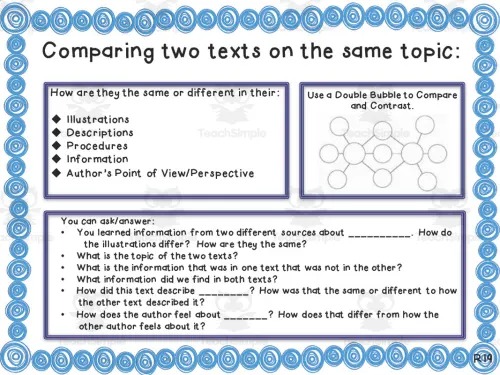
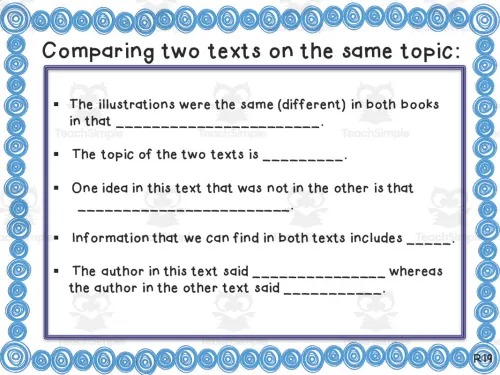
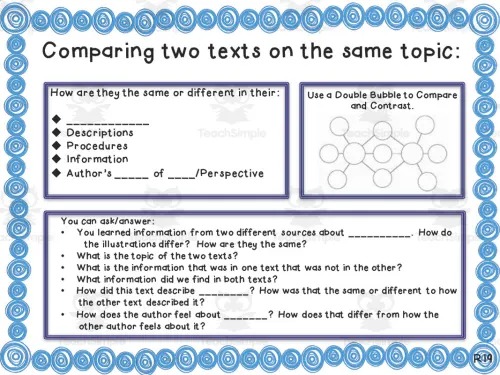
Basic Story Elements From Teaching Expertise
This anchor chart is perfect for beginning readers in kindergarten or first grade. It lists the basic story elements, so you can add notes or a marker to fill in the blanks.
Story Elements at a Glance From Weebly
This story-elements anchor chart works for just about any age, as the symbols are simple to understand.
Five Finger Retelling From We Are Teachers
Students can learn to retell a story using the five-finger method. Use each finger to represent one story element.
Story Element Jigsaw From We Are Teachers
The picture illustrates one of the most common types of story-elements anchor charts. The puzzle pieces demonstrate how all the elements come together to form an engaging story.
Sticky Note Illustrations From We Are Teachers
Students can use sticky notes to add story elements to a chart to practice pre-writing.
Story Element Match Up From Teaching With A Mountain View
Students sort the story elements into individual piles (Setting, Characters, Problem, Solution). Students then combine all of the cards to form the main idea statement
If you are looking for some excellent story element anchor charts, look no further.
Story Elements Anchor Chart Resources from Teach Simple
Fiction Story Retell Anchor Chart By First in Line
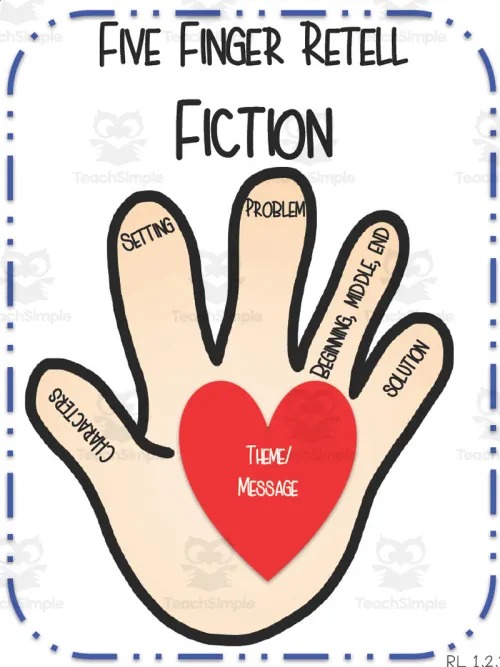
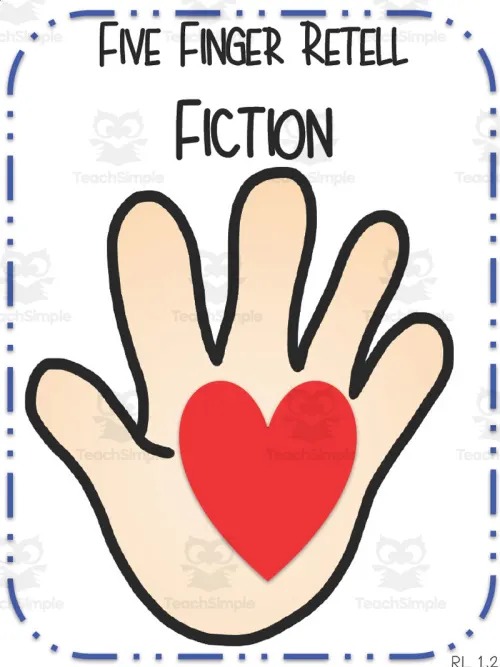
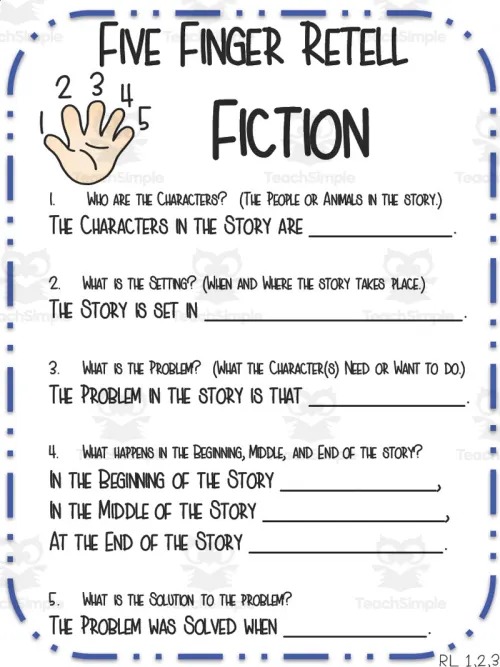
These anchor charts are perfect for displaying on a bulletin board or inserting into students’ reading notebooks to teach the five-finger story retell for fiction texts. The first chart is already finished; the subsequent seven are blank.
Basic Story Elements Notes By Time Thrifty Teacher
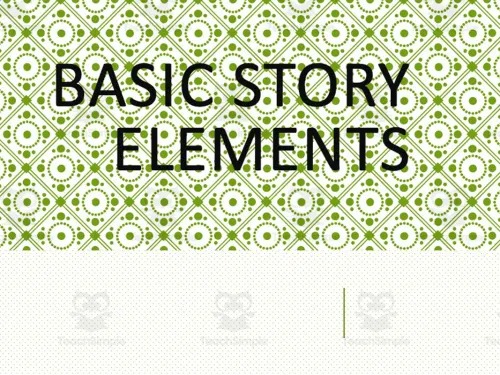
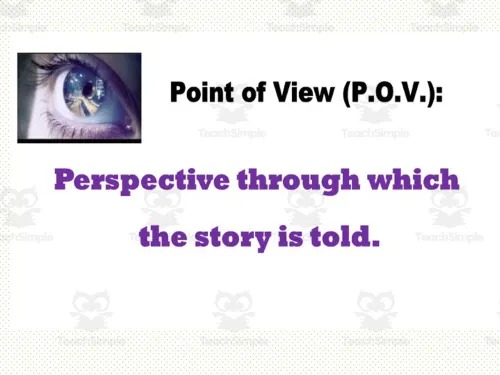
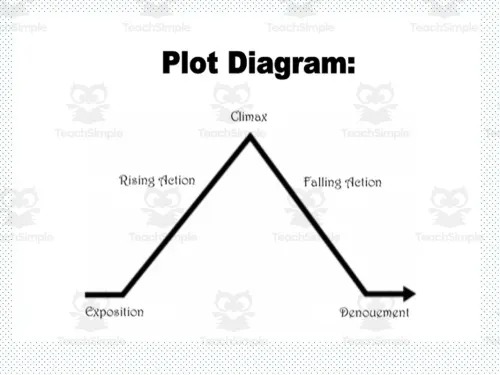
This is great for older students. They can be displayed in the classroom and have their own copies. It includes an interactive PowerPoint presentation about story elements definitions and a template for taking notes.
Teaching Plot Anchor Chart By First In Line
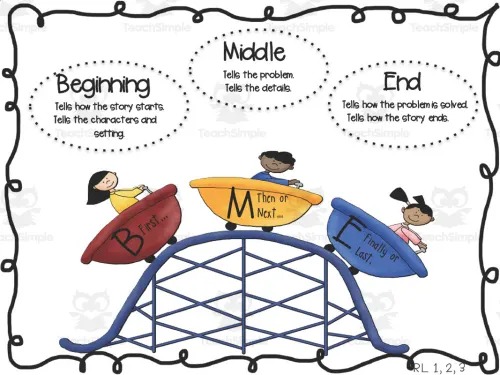
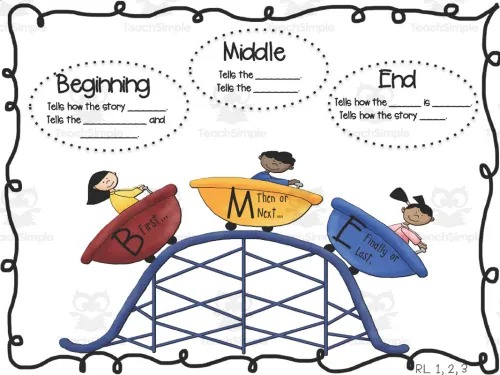
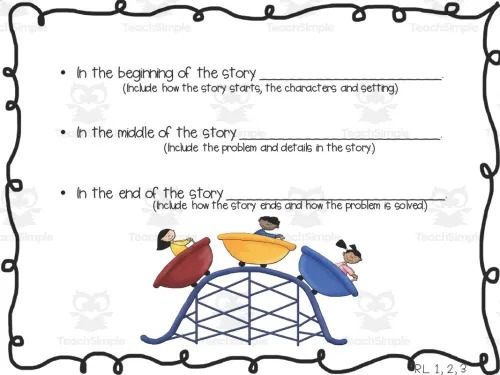
These four anchor charts provide a visual representation of the plot of the story. The first chart is finished; the following three are blank. These charts may be used to create a display bulletin board or fill in the blanks in students’ interactive reading notebooks.
Charts That Deal With Elements Individually
Teach Simple has some cool anchor charts for each of the elements of the story. These are great if you want more detail on hand for your students to refer to.
Learning About Setting Anchor Chart By First in Line
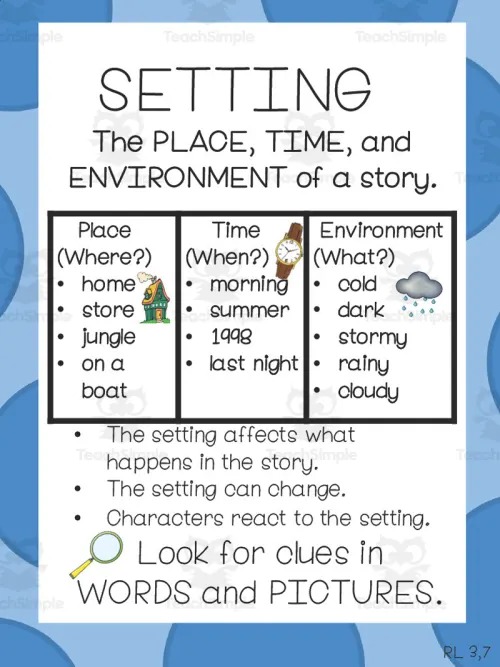
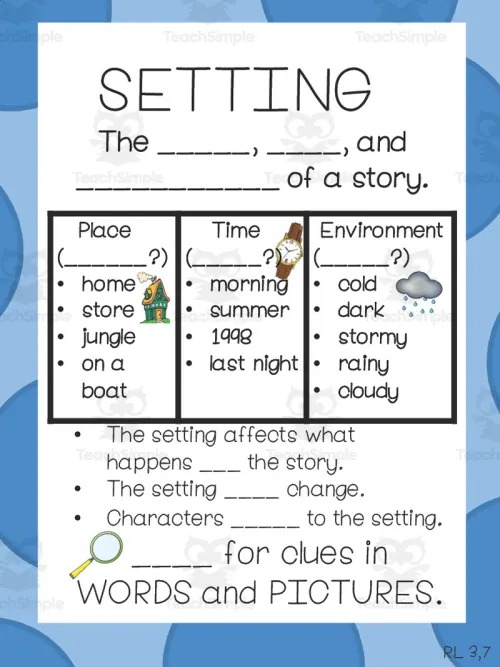
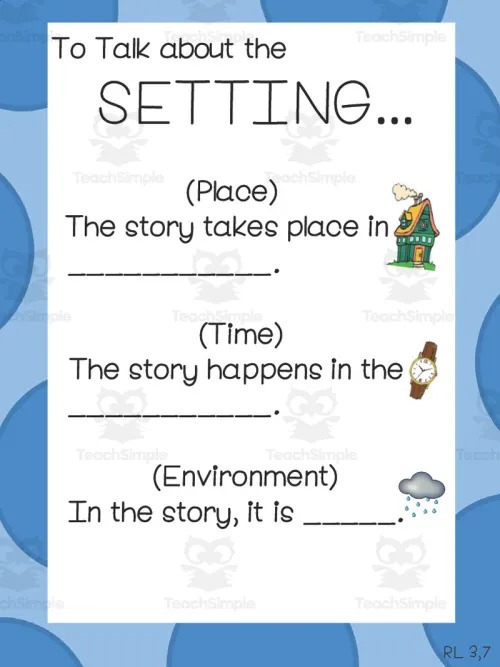
Beginning Middle End Plot Activity By Have Fun Teaching
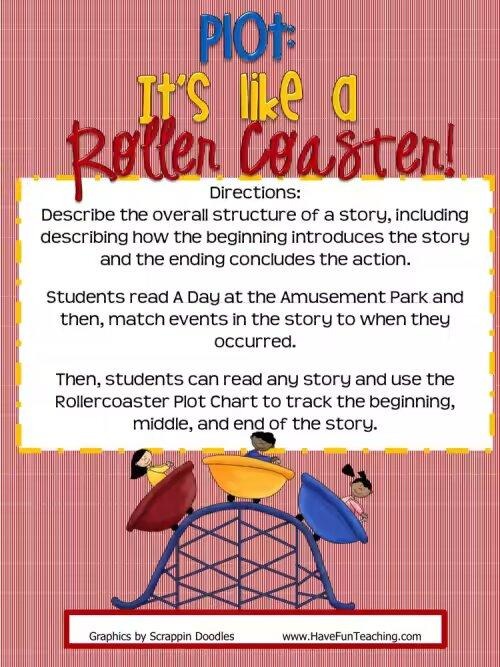
Story Elements Graphic Organizer By Have Fun Teaching
Students can listen to the story and fill in as many details about the elements as they can.
Other Story Elements Anchor Chart Resources
Follow the Yellow Brick From Children’s Literature Blog
You can do this with any story, but this is a great resource to work with after telling a story. Students can identify the elements and place them in the correct block.
Jigsaw From Teaching With A Mountain View
If you like the idea of the story element jigsaw I mentioned earlier, here is a free template.
Story Elements Anchor Charts From My Cute Graphics
A simple yet effective poster for younger students. Print and use, or make your own using this awesome clipart studio.
Everything You Need In One Place
Pam Olivieri has taken it upon herself to make our jobs much more manageable and has created an entire vault of free resources. Her writing anchor charts cover everything you need.
Mini Anchor Charts By Madison School
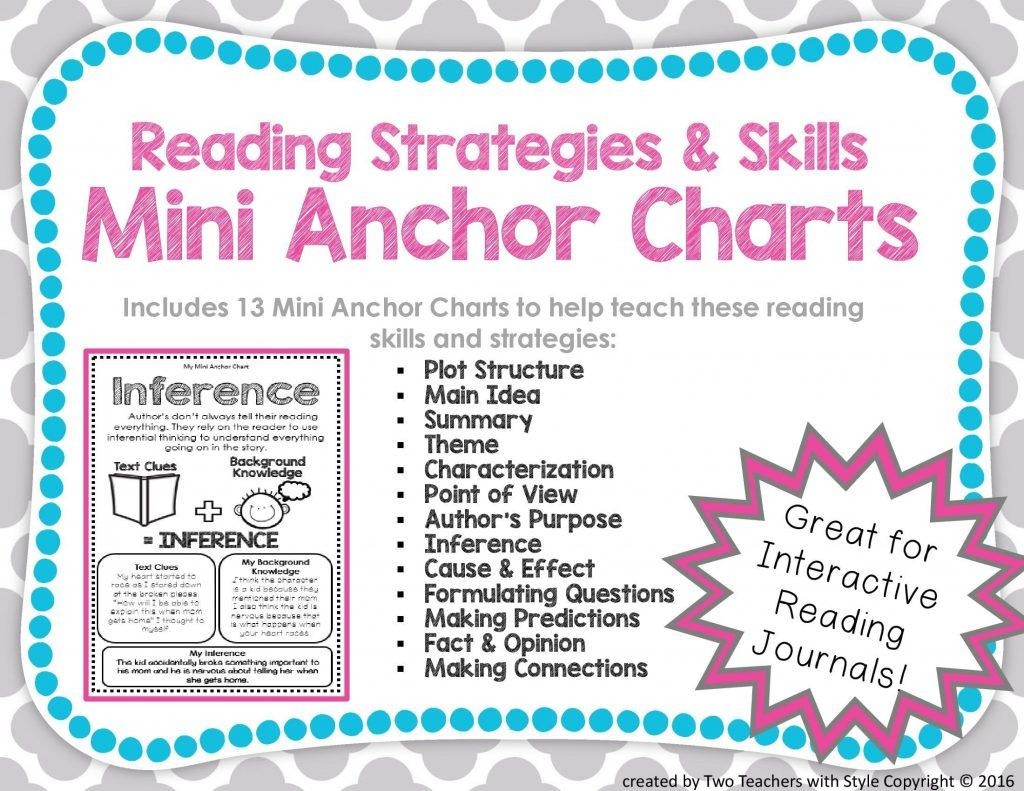
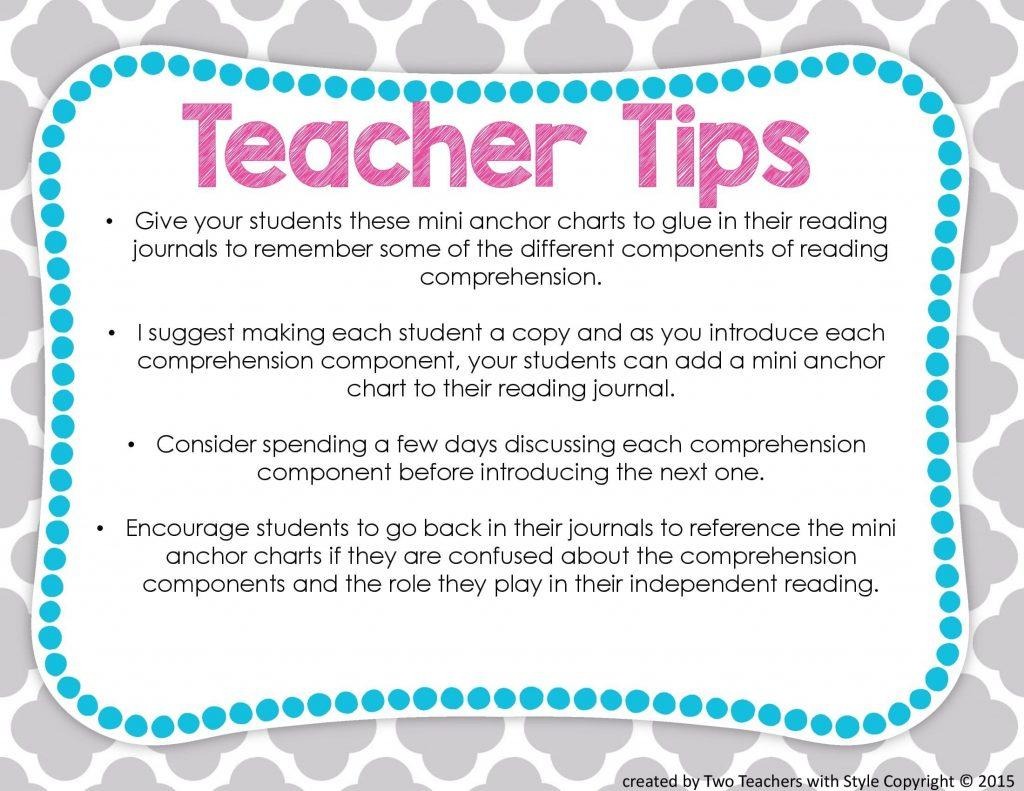
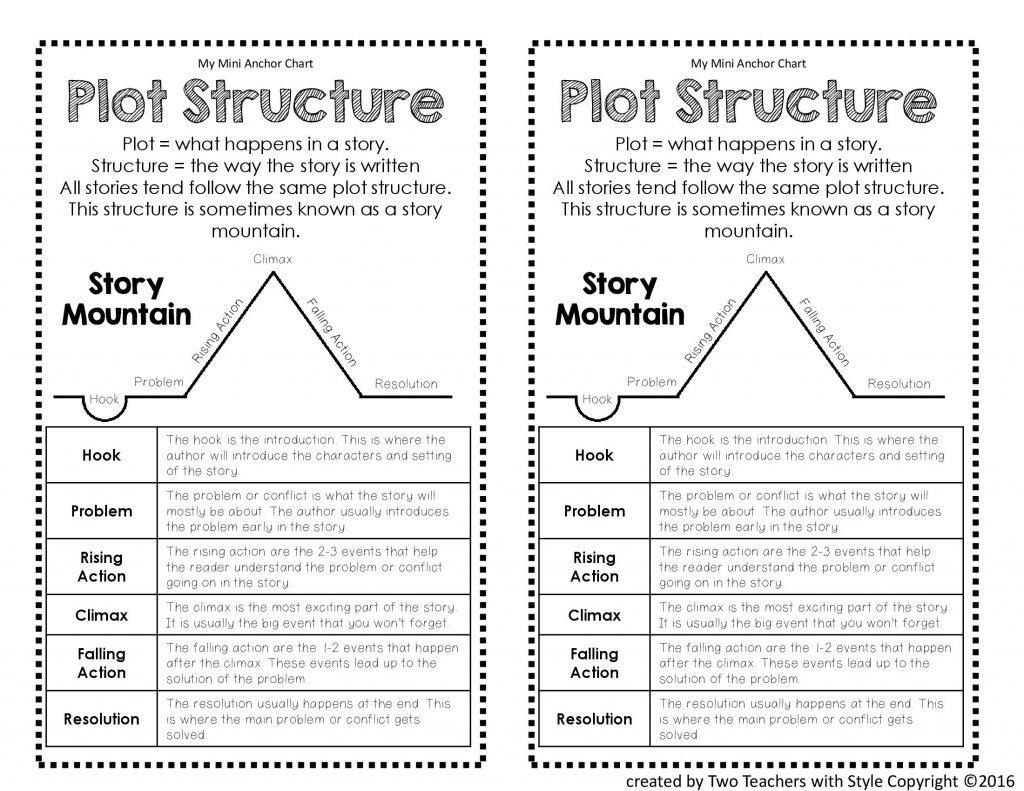
These mini anchor charts can be glued into students’ journals to remind them of the various aspects of story elements and reading comprehension.
Books For Teaching Story Elements in the Elementary Classroom From Missing Tooth Grins
These picture books are a terrific method to introduce story elements in kindergarten and first grade. These narratives make an excellent mentor text for subsequent work, worksheets, graphic organizers, or small group lessons. Use reading workshops and guided reading to encourage kindergarten, first-grade, and second-grade literacy during language arts.
Story Element Task Cards From Teaching With A Mountain View
This anchor chart, notebook page, and activity packet cover all the elements of upper elementary teaching. It’s free to download and includes a book project!
Teaching Story Elements With Pixar Short Films From Digigood And Printablesela
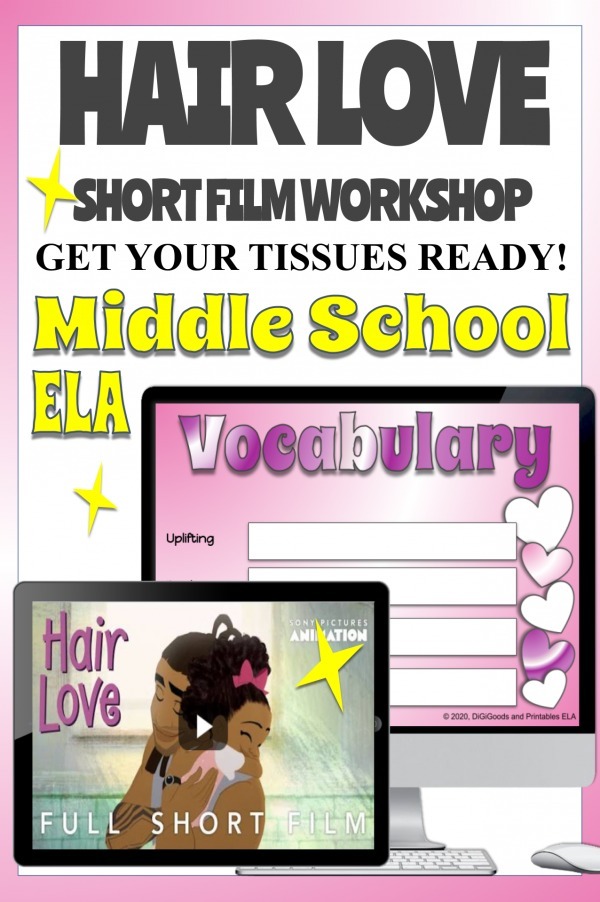
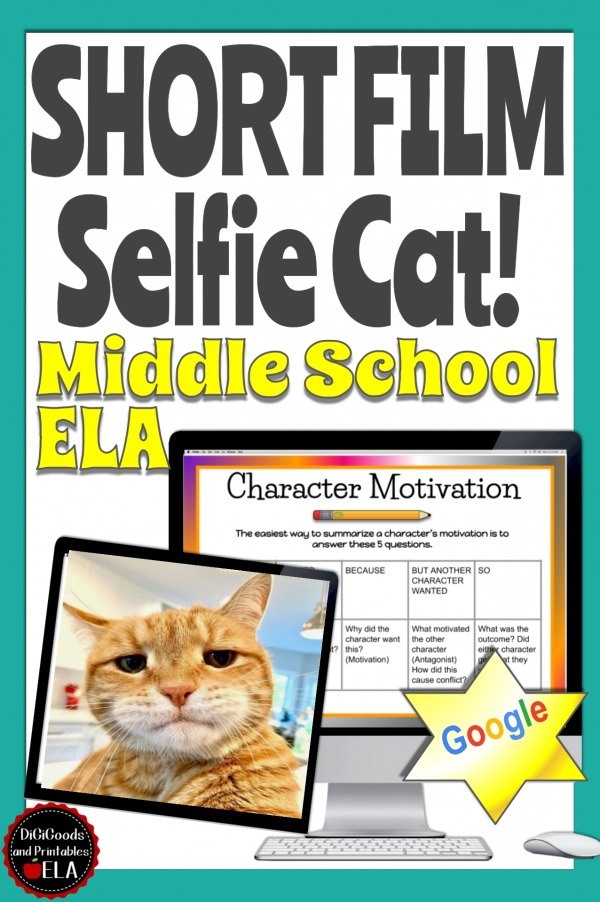
Students will not only learn how writers use story elements such as inference, theme, plot, and the main idea, but they will also express their own narrative writing through them.
Fairy Tale Story Map From Education.com
This fairy tale story map can help you follow the story’s details and strengthen your students reading skills.
You Could Have a Budding Author in Your Midst
The elements of a good story are the building blocks of all great tales. Anchor charts are a fantastic way to help students understand the components that make up a story and how to create a compelling narrative. Anchor charts get students actively involved in learning and could be the starting point to a great author’s love of storytelling – you never know.
